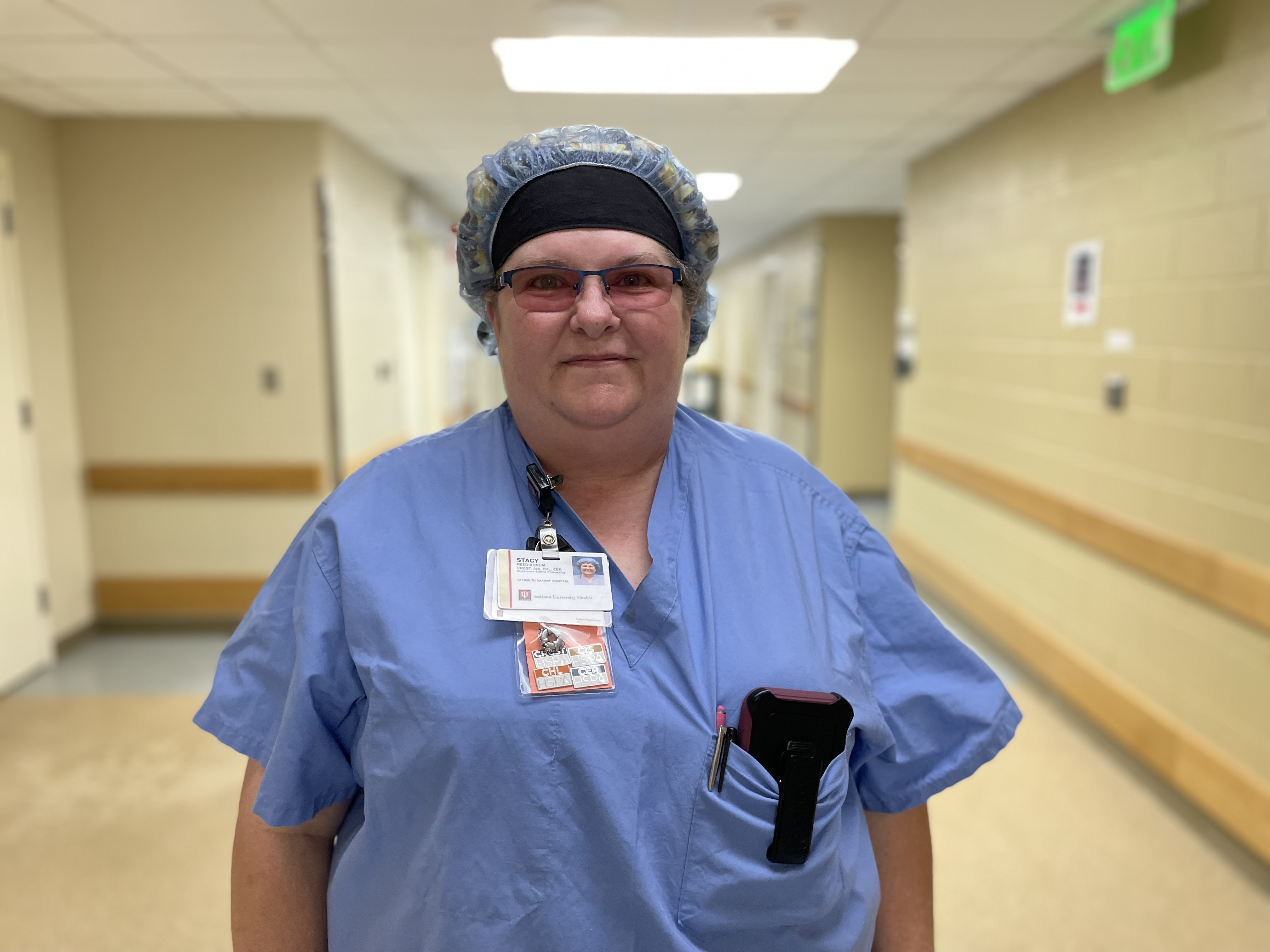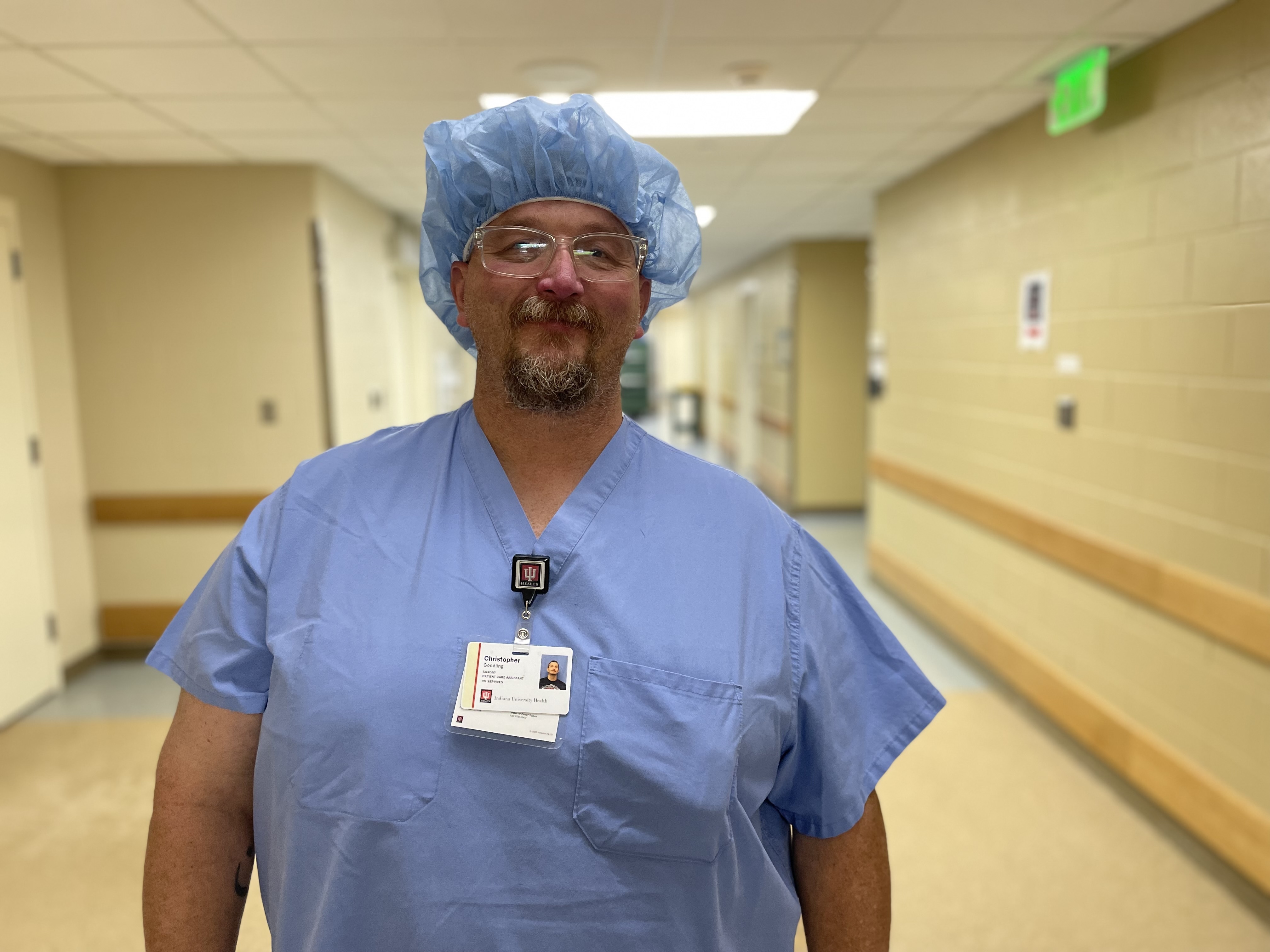While construction won’t directly impact IU Health Saxony’s Central Sterile department for some time, its leaders are ensuring their team is engaged and informed throughout the whole process.
By Charlotte Stefanski, cstefanski@iuhealth.org, writer for IU Health’s Indianapolis Suburban Region
When visiting IU Health Saxony, most patients interact with those involved in their care, whether it be doctors, nurses, care assistants and more.
But there’s one department that has a huge impact on patient outcomes—even though they’re rarely seen on the main floors of the hospital.
Those in Central Sterile are responsible for cleaning, inspecting and sterilizing all surgical instruments and procedural equipment.
“We help a lot with keeping the infection rate down, so it’s really important,” said Supervisor Stacy Reed-Borum.
Reed-Borum has 13 years of sterile processing experience. She joined IU Health in 2016 and came to IU Health Saxony—soon to be IU Health Fishers—four years ago. The department’s team lead, Chris Goodling, joined the team when Saxony first opened its doors in 2012.
Located in the lower level of the hospital, those working in Central Sterile not only meticulously clean the instruments, but they have plenty to memorize as they prepare the needed tools for different procedures.
“I didn’t even know Central Sterile existed until I came here,” Goodling said. “It’s very interesting. A lot of learning, but it’s fun to do.”
Involved since Day 1
When the Fishers Community Impact Project was announced in 2022, Reed-Borum was a little apprehensive.
The $300 million investment would include a significant expansion of the IU Health Saxony Hospital campus, adding more beds and several new services, including pediatric emergency medicine and obstetrics and gynecology.

While it was exciting for her community and fellow team members, she was unsure how it would impact her department’s work and wellbeing. In her 13 years in healthcare, Reed-Borum knew that Central Sterile could sometimes be left out of conversations when it came to things like facility expansions.
However, that wasn’t the case at IU Health Saxony.
“Architects came down before any plans were made and asked us what we would need if we had ‘x’ number of patients,” Reed-Borum recalled. “I’m thankful that we’ve been included since day one. We get updated weekly on the progress of the expansion.”
That feeling of inclusion has helped the department embrace the change and have excitement as construction continues.
For Goodling, a Fishers resident, that excitement has been a longtime coming. He’s watched the area grow rapidly and saw the need for expanded services at the hospital.
“It’s been really cool to see all of the buildings, and then to be part of Saxony from the very beginning,” Goodling said. “To seeing where it’s going is really cool.”
Future impacts on Central Sterile
Now more than a year into the expansion, the hospital is currently experiencing heavy construction in its Emergency department, Imaging and Short Stay units.
Central Sterile won’t be directly impacted by the construction until the end of the project, which is slated to wrap up in 2025. But already, the team is gearing up for changes.
“Even right now, we’re trying to change certain ways of how we’re doing things—trying to prepare how we’re going to move into the department,” Goodling said.

More patient beds and new services means that Central Sterile will have an increase in the number and types of tools the department works with. Up until this point, the team has worked mostly with tools related to orthopedic procedures.
“That’s exciting for us because we see mostly orthopedic cases. Now, we have pediatric emergency medicine and general surgery, and we added in labor and delivery too,” Reed-Borum said. “It makes us feel like we’re doing even more for the community than just surgery.”
While Central Sterile expands, it will remain in the same location of the hospital. And similarly to other departments, the team will also have the chance to participate in “day-in-the-life” activities, where team members test out their new surroundings and make adjustments.
Goodling is excited for upgrades that come along with the construction, including a new generator and steam line—both of which will help cleaning and sterilization power.
There will also be more space for team members to gather their tools, which Goodling explained would function like a grocery store aisle.
“I think it’s pretty exciting. We’re not patient facing, in fact, patients don’t even know we exist, but we play a really big role in their care,” Reed-Borum explained. “When somebody comes in the Emergency department (ED), we supply things to the ED. We also supply things to Cath Lab. So as those departments are growing and seeing more patients, we’re also seeing more patients.”
Keeping up as construction continues
While it will be some time before Central Sterile is directly impacted by construction, Reed-Borum and Goodling are ensuring their team stays informed and involved throughout the process.
Reed-Borum was pleasantly surprised by the smooth transition during the expansion, as she knows transitions like these can be hard, and she’s glad that care teams have been consulted.
“I thought it was really awesome that they came to us and said, ‘What do you need? How should this flow?’” she said. “There’s times where they’ve come to us with a blueprint, and we tell them why something won’t work, and then they change it to where it will work.”
Goodling added that being so involved has helped with morale, both for his team members and even the construction crews.
He knows his department will be a tricky construction zone in the future, as the instruments need to be kept clean and dust free, and those coming in and out will have to wear the surgical “bunny” suit.
In the meantime, they want to thank their construction partners.
“I want to give some kudos to the construction workers—the ones working inside and especially the ones working outside, because they’ve worked in some crazy weather to get this done,” Reed-Borum said. “They’re playing a big part in this too.”
